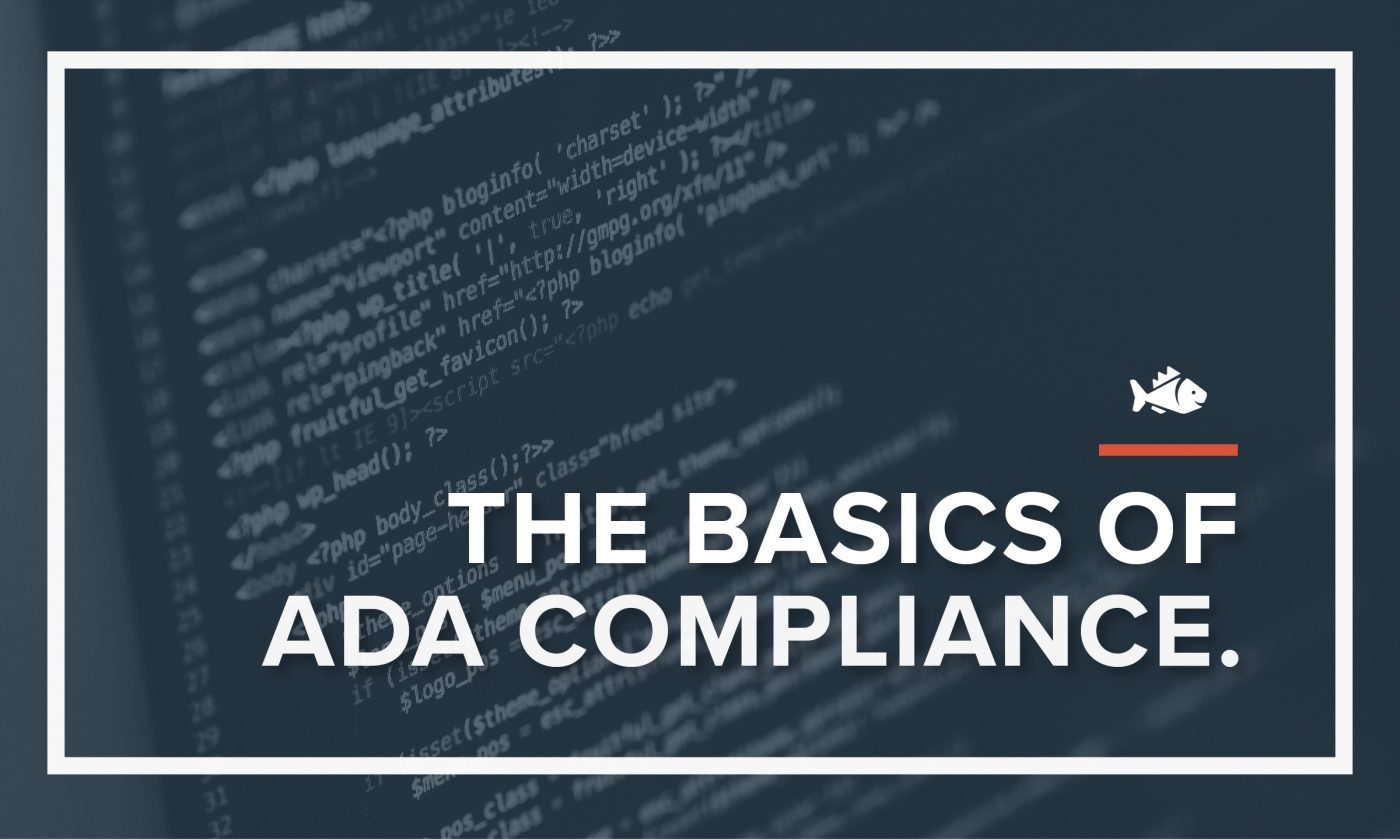

Nearly 13 percent of people in the United States have some kind of disability, according to the American Community Survey. The Americans with Disabilities Act (ADA) is designed to make sure people with disabilities are can enter, exit, use facilities, and maneuver around spaces open to the general public.
This includes government buildings, housing, vehicle parking, and businesses that are open to the public. In recent years, the Department of Justice has pressed for the same type of access to websites on the internet.
At this point, there still isn’t a law requiring your website to be accessible to the blind or hearing-impaired, but it’s good business to ensure your site meets the standards laid out in the ADA.
Doing so enlarges your target market as much as 13 percent and increases your site traffic. If (when) governments begin legislating access to websites, you’ll be one step closer to meeting those requirements.
Think of Everything
If there’s any way someone will have problems navigating your website or understanding your content, you can bet there's a room full of people that already thought about it. Sooner or later, they’re likely to expect you to fix it.
At its ADA.gov website, the Department of Labor provides resources to learn about the ADA, the standards they recommend, and guidelines to achieve them. One of these resources is called the ADA Best Practices Toolkit.
Modern operating systems provide assistive technologies to allow people with disabilities to operate computers.
Some of these assisted methods include voice command, screen readers, enlarged text, changing the color and contrast of the screen, and alternative input such as puff tubes, eye blinks, or teeth paddles.
You need to provide for people using these types of technologies to navigate your website. In the same way, building design creates barriers to entry for people with disabilities, website design can prevent those people from accessing the features, information, or services on your website.
Designing for accessibility requires the understanding that not everyone uses a website the same way. Remember, if people need to use a mouse, hear certain sounds, or see buttons and pictures to use your website, you’re missing out on 13 percent of your market.
The Department of Labor suggests planning for deafness, cognitive issues, speech problems, light sensitivity, learning disabilities, blindness, and restricted movement.
How To Comply
Guidelines on the ADA website provide assistance in creating accessible websites. One of the best tools is a set of guidelines that lays out specifically what the Department of Labor expects to see from websites to accommodate disabilities.
The Web Content Accessibility Guidelines (WCAG) are the shortest route to checking off items that will make your website more accessible. The WCAG was written specifically for web designers, web programmers, and other developers who benefit from a straightforward checklist to achieve ADA compliance.
WCAG was developed through international W3 Conferences and collaboration across the globe. The purpose is to establish a single set of standards that apply across the web to bring governments, individual webmasters, businesses, and organizations into alignment.
https://www.w3.org/WAI/standar... guidelines are laid out in three levels: A, AA and AAA. Here are some of the standards from each level.
Level A
Text: Elements like input fields and website controls must have descriptive names. Each video, animation, audio file, or image needs alternative text that describes it or defines it. Frequent titles describing topics are necessary.
Content: All content should be accessed using multiple methods to accommodate a wide variety of disabilities. Among the methods suggested are multiple layout options, alternative structures to choose from, and instructions on how to use these alternate methods. There should be no moving, blinking or scrolling items or repeating blocks of the same content on multiple pages.
Color: Never use color to distinguish between parts of the site, to indicate choices or to prompt actions.
Keyboard navigation: Visitors must be able to move throughout the website with keystrokes only. Never implement a requirement for timing of the keystrokes
Audio files and soundtracks: Any audio track that plays longer than three seconds must allow visitors to stop the audio or control the volume separately from the system.
Level AA
Contrasting text: Text and images need a contrast ratio of 4.5:1 except large scale text and images, which need to have a contrast ratio of 3:1 unless they are part of the user interface or decorative themes like buttons and logos.
Keyboard: Visitors must be able to navigate the entire site by a keyboard.
Audio and video: All live audio or video must be captioned.
Secure input: Any data entered must be secure, especially sensitive legal or financial information. Users must be given the opportunity to look over their responses to input fields and confirm their input in a separate step before input is finalized.
Navigation: All navigation must be consistent and maintain the same order, whether going forwards or backing up.
Level AAA
Sign language: Any previously recorded audio tracks need sign language interpretation of the audio track. Pre-recorded speech tracks must not contain background audio or sounds during human speech.
Content size: Blocks of content cannot exceed 80 characters in width. Lines must be spaced one and a half spaces apart within paragraphs. Paragraphs must be spaced two and a quarter line spaces apart. All content needs section headings.
Interruptions: Content shouldn't flash faster than three times per second. Website visitors need to be able to postpone or suppress any interruptions.
Reading level: Content should be understandable to persons with a ninth-grade or lower education. There needs to be an explanation provided with any unusual words or phrases on the website.
Help feature: Visitors must be provided with contextual help for the content on which they are focused. Users must be allowed to reverse any input supplied, review any new input, and confirm the information over again before submitting the information.
Planning for Compliance
These ADA guidelines are only a partial look at the measures suggested by the W3 Conferences that developed the WCAG in the first place. For a complete explanation of the WCAG visit the W3 website at https://www.w3.org/TR/WCAG20/.... Your Plan Into Action
The ADA website suggests the following steps to put compliance measures into place on your website.
Create a policy that puts an emphasis on accessibility and publish it on your website. Establish written procedures to ensure that any new, modified or updated pages on the site are brought into compliance
Set up a timeline and a plan to convert all existing content to accessibility standards. Publish this plan on a webpage that’s compliant with ADA accessibility standards and ask for input from the public.
Train your development team to follow the ADA standards outlined in the WCAG.
The Department of Justice has published a technical assistance document titled “Accessibility of State and Local Government Websites to People with Disabilities” that can be handed out to your web development team on a periodic basis to keep them cognizant of the necessity to remain compliant. This paper can be found on the ADA.gov website.
Create a method for disabled visitors to contact you with any questions about the website, your services, or ways to improve accessibility. Ensure quick responses to any contact through this method.
Modern life essentially requires access to the internet for everyone. Everyone needs to do their part to ensure significant portions of the population with disabilities are able to access the internet like everyone else.
